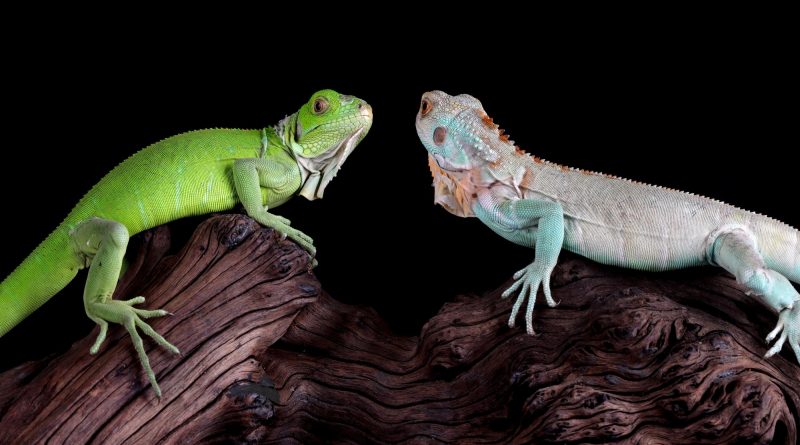The Most Popular Pet Reptiles for Beginners to Keep
When I initially became interested in reptiles. My only knowledge of them was that they consumed mice. That is it. I did not know what kind of snake I wanted or how to care for one properly. Therefore, I did what anybody new to a pastime would do and conducted research online. Reading articles and watching YouTube videos about snakes occupied most of my time.
Time taught me many things about morphs, such as how frequently they ate and what type of care they required. I got more fascinated by the many types of reptiles I might keep as pets as time passed. Learning how to care for them prompted me to assist others in selecting their first reptile pet. I continue to enjoy educating others about the topic. The following are my five favorite reptiles for novices to care for.
Perched Gecko
Next on my list is the adorable Crested Gecko, also called the Eyelash Gecko. This gecko species inhabit the southern region of New Caledonia. In 1866, a French biologist called Alphonse Guichenot first discussed and wrote about the crested gecko.
Before Robert Seipp discovered it on a trip in 1994, it was believed that the Crested Gecko had become extinct. Even without eyelids, crested geckos lack eyes. Moisture is maintained by transparent scales or spectacles covering each eye. The animals use their tongues to remove any dirt or dust. Crested gecko legs and toes resemble spider webs.
They lose their tails under stress and don’t grow them back. Cresties are referred to as frog butts when they lack a tail. They are an arboreal species that prefers to reside in the New Caledonian rainforests’ treetops. This makes them excellent leapers.
Ball Python
Ball pythons are often known as “royal pythons” since ancient rulers used them as ornaments. They originated in western and central Africa, but many Westerners now keep them as pets. They may grow up to 3 to 6 feet in length, consume one mouse weekly, are nocturnal, non-venomous, and can live up to 30 to 45 years in captivity.
The term ball python derives from its inherent defense mechanisms. They often curl into a ball with their head in the center when frightened. With the proper socialization, they are very quiet and manageable. Significantly more than most!
People worldwide who raise animals for pleasure adore these critters. “Morphs” are a large group with various colors and patterns. It is simple to see why some individuals cannot resist purchasing many items. It was simple for me to get carried away with my pastime. They are gorgeous and one of the easiest reptiles to care for, requiring little effort and maintenance.
The Beard Dragon
The bearded dragon originates from the underside of the lizard’s neck, which may enlarge and darken for various causes. Fear or anxiety is the most common cause of this. When they are content, the scales on their body become flatter and almost smooth.
Beardies are omnivorous reptiles. They consume leaves, fruits, greens, flowers, rodents, lizards, and insects like cockroaches, crickets, and mealworms. Before the 1990s, these bizarre-appearing creatures were not kept as pets. They are native to the deserts of Australia.
You can often find one of the most common reptiles to keep as pets perched on their owner’s shoulder. Bearded Dragons may survive in captivity for 10 to 15 years if properly cared for, and a fully grown beardie can grow to an average length of 17 inches. They are adorable, curious, simple to handle, and very distinctive; thus, they are in my top five.
Corn Viper
The corn snake inhabits the South-Eastern area of the United States. They are tranquil and colubrid, which means they may move swiftly, so handle them with caution. The Corn Snake derives its name from its underbelly’s black and white stripes.
Because they resemble venomous copperhead snakes, they are often killed. They are beneficial because they reduce the number of wild rodents that carry illness and damage crops.
Typical Corn Snake habitats include woods, overgrown fields, abandoned structures, and farms. Most of their movement occurs during daylight hours since they are diurnal creatures. Corn Snakes may reach 2.5 to 5 feet at maturity, and their average lifespan is 5 to 10 years; however, they can occasionally live longer.
Leopard Gecko
The Leopard Gecko inhabits the deserts and arid grasslands of Afghanistan, Iran, Pakistan, India, and Nepal. The average lifespan of these adorable creatures in the wild is around 15 years, whereas it is 22 years in captivity. They have eyelids, unlike the majority of reptiles. Additional characteristics include slender toes, large skulls, and large, oval-shaped eyes. They live alone and dislike living with other animals.
When angry, they make a tiny barking sound but do not speak as often as other gecko species. These adorable critters are ideal if you want a peaceful, easy-to-train companion that can be handled. Leopard Geckos are solely nocturnal. They consume mealworms, wax moth larvae, crickets, and grasshoppers. Leopard geckos make excellent first pets for several reasons.
They are odorless, need no bathing, and are both peaceful and adorable. Who wouldn’t want to gaze into such enormous, bulging eyes? I know I will attend. I’ve had two of them in the past, and as a reptile enthusiast, they are among my favorite pets. They are entertaining, manageable, inexpensive, and simple to care for. The ideal pairing!
Conclusion
Whether you begin with a ball python, a lovely crested gecko, an inquisitive beardie, or a corn snake, you will likely fall in love with these little animals. Even if you don’t keep them out and don’t touch them much, it’s fun to watch them seek food and engage in other activities. If you want to proceed, I urge you to do as much research as possible.

